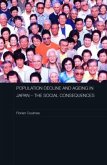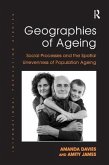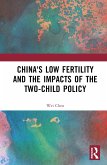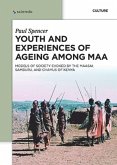Using a mixture of economic and demographic analysis, this book studies the changing patterns of family formation over the last twenty years. A strength of the book is the data and analysis included on Japan and Western countries, which have previously been less researched than the developing world. The first part explores the effects of economic considerations on family formation. Topics covered include the correlation between levels of cohabitation and personal economic resources and modelling the changes in optimal timing of childbearing in Britain, using the earnings profile of the mothers. The second part deals explicitly with the impact of demographic patterns on economic behaviour, and especially with the distribution of economic resources as a smaller working population supports a growing population of the elderly. The data used is from Sweden, Japan, and France, and the economic models used find that lower consumption and greater inequality is the likely implication for the future.
This volume in the International Studies in Demography series analyses the changing patterns of family formation over the last twenty years. The analysis is set in the context of the demographic transition: the falling birth rates and ageing population of the industrialized countries. The contributors examine the changes in economic behaviour, the implications of demographic patterns for governmental policies and the effects these demographic patterns have on the availability of labour. The distinguished editors have succeeded in merging both economic and demographic analysis into a coherent whole, and this volume will be invaluable for academics and graduate students of both disciplines, who are interested in understanding the phenomenon of ageing societies. One strength of this book is the amount of data and analysis included on Japan and the Western world. The volume is divided into two parts, the former exploring the effects of economic considerations on family formation, while the latter deals with the impact of demographic patterns on economic behaviour, and especially with the distribution of economic resources as a smaller working population supports a growing number of the elderly. Subjects dealt with include the correlation between levels of cohabitation and personal economic resources; a model of the changes in optimal timing of childbearing in Britain using the earnings profile of the mothers; an exploration of how the changing age of marriage mitigates changes in population size; and the transfer of resources between generations.
This volume in the International Studies in Demography series analyses the changing patterns of family formation over the last twenty years. The analysis is set in the context of the demographic transition: the falling birth rates and ageing population of the industrialized countries. The contributors examine the changes in economic behaviour, the implications of demographic patterns for governmental policies and the effects these demographic patterns have on the availability of labour. The distinguished editors have succeeded in merging both economic and demographic analysis into a coherent whole, and this volume will be invaluable for academics and graduate students of both disciplines, who are interested in understanding the phenomenon of ageing societies. One strength of this book is the amount of data and analysis included on Japan and the Western world. The volume is divided into two parts, the former exploring the effects of economic considerations on family formation, while the latter deals with the impact of demographic patterns on economic behaviour, and especially with the distribution of economic resources as a smaller working population supports a growing number of the elderly. Subjects dealt with include the correlation between levels of cohabitation and personal economic resources; a model of the changes in optimal timing of childbearing in Britain using the earnings profile of the mothers; an exploration of how the changing age of marriage mitigates changes in population size; and the transfer of resources between generations.








